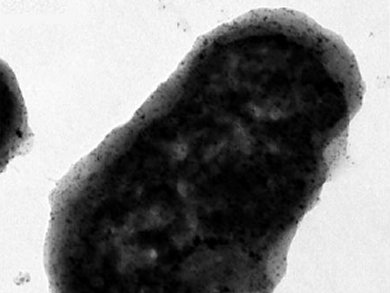Bio-recovery of Pd(II) uses bacteria as support for sorption and reduction of Pd(II) to catalytically active Pd(0) nanoparticles immobilized on the surface and in the periplasmic space of the cells. This has long been considered an environmentally friendly approach to recover palladium from waste. Past studies regarded Pd(II) reduction in this context as being mediated by active enzymes (hydrogenases).
Troels Skrydstrup, Rikke Louise Meyer, Aarhus University, Denmark, and colleagues show that active enzymes were not required to achieve efficient Pd(II) bio-recovery. Instead, they propose that coordination of Pd(II) with amine groups on the cell surface is the key to Pd(II) reduction. Indeed, similar Pd(II) reduction rates were obtained when bacterial cells were replaced with amine-functionalized polystyrene microparticles. If the amine groups were chemically blocked, Pd(II) reduction was hampered.
In light of these findings, (bio)materials rich in amine groups are proposed as an ideal support for recovering Pd from waste to form catalytically active Pd(0) nanoparticles.
- Non-enzymatic palladium recovery on microbial and synthetic surfaces,
A.-E. Rotaru, W. Jiang, K. Finster, T. Skrydstrup, R. L. Meyer,
Biotechnol. Bioeng. 2012, 109, 1889–1897.
DOI: 10.1002/bit.24500




